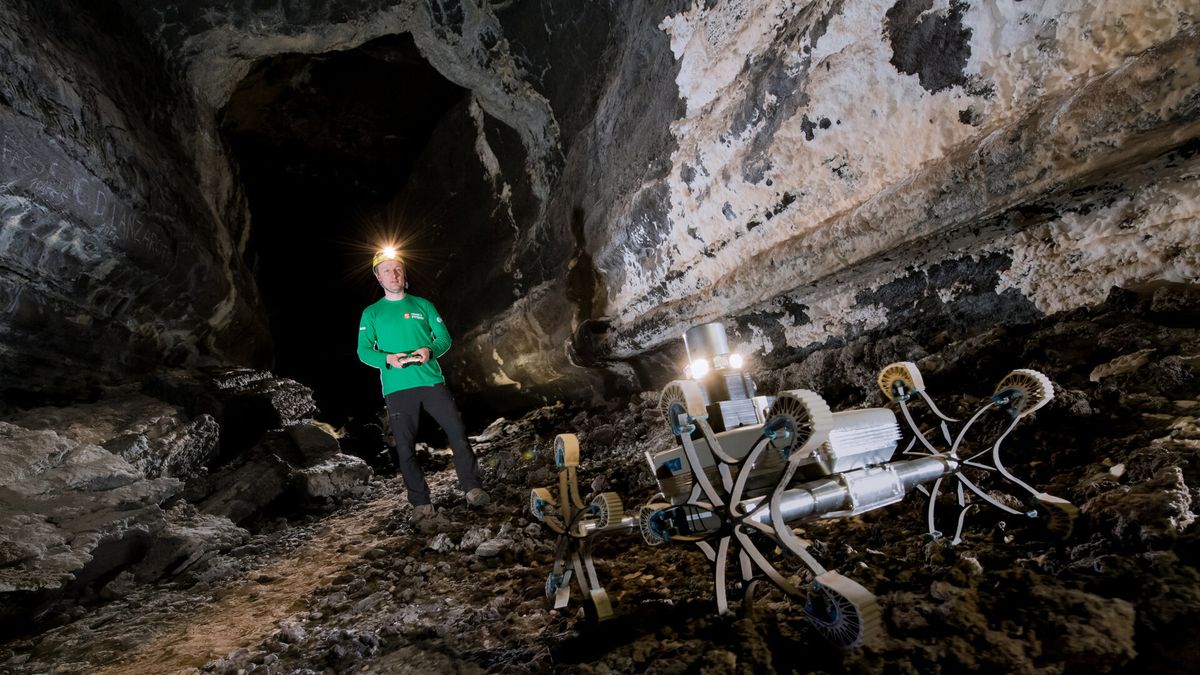I found this interesting.
www.bbc.com/earth/story/20160129-the-shrimp-that-has-turned-bubbles-into-a-lethal-weapon?fbclid=IwAR0COh9I-gPh7g9BCHd66ODBtZzvkbUWuLNIhz1aUutIetPHjOUTenqXEkw
A snapping shrimp can click its claws together and knock out its prey - without ever touching it
By Alex Riley
29 January 2016
Beneath the waves, there is a sound that is so familiar to mariners that they could easily misinterpret it as the sound of the ocean itself. It is a constant clicking that permeates the shallow waters of the tropics, day and night. Some liken it to the crackling of burning tinder. Others say it sounds like the snap, crackle, and pop of milk on cereal.
The source of the sound is actually a tiny shrimp equipped with an unusually large claw. When that claw snaps shut, it helps generate an intense burst of sound that can stun the crustacean's prey – snails, other crustaceans, and small fish.
Unsurprisingly, the small hunters have been dubbed snapping shrimps – although they are sometimes given the more evocative name "pistol shrimps".
But their claw is not just a stun gun. It is also their voice box. By snapping, they are able to communicate with their innumerable neighbours, each tucked away in its own den in the soft sand.
A prawn goby and Randall's pistol shrimp (Credit: Constantinos Petrinos/naturepl.com)
A yellownose prawn goby (Stonogobiops xanthorhinica) with Randall's pistol shrimp (Alpheus randalli) (Credit: Constantinos Petrinos/naturepl.com)
Snapping shrimps form large colonies that carpet the seabed. Some species share their burrows with goby fish in a mutually beneficial relationship: the shrimp offers the fish a place to live, the fish gives the shrimp protection from predators. There are over 1000 species in total, their ubiquity embellishing the underwater landscape with a rich, fertile soundscape.
The sound of the snapping shrimp is familiar to many who work in and on the sea
In fact, their communal chatter is so pervasive that it creates a white noise that fills the marine strata, from sand to water's surface – much to the annoyance of researchers trying to study the nuances of underwater acoustics in the tropics. The small crustaceans – they rarely exceed the size of your big toe – create irremovable interference that makes other sounds difficult to detect.
It is so difficult to hear anything above this crustacean cacophony that the sound might even have played a part in World War Two.
Between 1944 and 1945, the US Navy deliberately used snapping shrimp colonies as an "acoustic screen" to hide from the underwater hydrophones in Japan's harbours, allowing their submarines to enter undetected. The shrimp might even have had their own part in early atom bomb tests on Bikini Atoll.
In short, the sound of the snapping shrimp is familiar to many who work in and on the sea, even if they do not know it. They have been known to science since the late 18th Century.
But for most of that time, they were misinterpreted. Biologists believed that the sound they produced was merely a product of claw closure, one surface hitting another like slamming a door or clicking your fingers.
However, one physicist had other ideas.
Who would have thought of weaponised bubbles? (Credit: Image Source/Alamy Stock Photo)
Who would have thought of weaponised bubbles? (Credit: Image Source/Alamy Stock Photo)
In 1999, Detlef Lohse from the University of Twente in the Netherlands was looking at a printout of a sound track.
It was very clear that the sound is in fact originating from this collapsing bubble
The peaks and troughs of amplitude over time looked very familiar to him. He had seen a similar pattern from his work into cavitation – the phenomenon of bubbles collapsing with extreme force due to a sudden change in pressure, producing a bang.
The recording was taken in an aquarium in Munich that contained Alpheus heterochaelis, the bigclaw snapping shrimp. To Lohse, it all made sense: a cavitation bubble, not the claw itself, created the snapping shrimp's snap.
"I heard these zoologists say that sometimes a bubble is seen," he says. "So I combined that information, and for me it was very clear that the sound is in fact originating from this collapsing bubble."
To prove his idea, Lohse created watertight theoretical models and equations, accurately demonstrating that a cavitation bubble was the only explanation for such a sound.
The shrimp had to be slightly annoyed
"But zoologists are not convinced by mathematical models," he says. "They wouldn't believe me." Lohse needed to perform some experiments with real shrimp to persuade them.
Using a high-speed camera (able to take 40,500 frames per second), a set of underwater microphones, and a paintbrush, Lohse's colleague, Michel Versluis, was able to deliver the goods.
Wait… a paintbrush?
Stimpson's snapping shrimp (Synalpheus stimpsoni) (Credit: CB Images/Alamy Stock Photo)
A pair of Stimpson's snapping shrimp (Synalpheus stimpsoni) (Credit: CB Images/Alamy Stock Photo)
To induce a snap, the shrimp had to be slightly annoyed, through tickling – and a paintbrush proved to be the perfect tickling stick. Only then could the data collection start.
As revealed by the high-speed videos, when the snapping shrimp's claw closes, one pincer has a protuberance that fits snugly within a hole on the other, like the internal workings of a tiny garlic crusher.
With a bang, the bubble explodes into a shower of tiny bubbles
While the claw is open, the shrimp contracts opposing muscles to ratchet up the tension – then it suddenly releases this tension so that the pincers tear through the water at close to 100km/h and the claw violently snaps shut.
But, at this point – silence. Lohse and Versluis picked up barely a murmur as the two pincers clacked together. The familiar loud "snap" actually came a fraction of a thousandth of a second later; a small but significant delay.
As the plunger on one pincer is forced into the socket on the other, a fast jet of water is ejected. "And high velocity means low pressure," says Lohse. Consequently, a zone of intense low pressure forms around the shrimp's claw.
Any small air bubbles in the vicinity – known as nuclei – are inflated by this change in pressure and follow the flow of water.
A shrimp goby with its attendant shrimp (Credit: Chris Gug/Alamy Stock Photo)
A shrimp goby with its attendant shrimp (Credit: Chris Gug/Alamy Stock Photo)
But when the bubbles move far enough away from the claw, they encounter a huge disparity in pressure between the water outside and the air inside them. The bubbles collapse under the strain.
It can stun small prey, and can even dismember and kill small invertebrates and fish
"This is happening really fast," says Anna von der Heydt who worked on the theoretical equations of the shrimp's cavitation bubbles. "The bubble growth and collapse happens in less than one millisecond [a thousandth of a second]."
With a bang, the bubble explodes into a shower of tiny bubbles, reverting back into the same infinitesimal nuclei that started it all.
The shockwave produced from bubble collapse is not only very loud, it is also extremely powerful. It can stun small prey, and can even dismember and kill small invertebrates and fish. Snapping shrimp have weaponised bubbles.
A pair of snapping shrimp (Alpheus sp.) (Credit: WaterFrame/Alamy Stock Photo)
A pair of snapping shrimp (Alpheus sp.) (Credit: WaterFrame/Alamy Stock Photo)
Like an underwater firework, the exploding bubble generates light as well as sound. By placing the shrimps in complete darkness and using a highly sensitive photodetector – and, of course, a paintbrush – Versluis could show that each bubble collapse coincides with the production of 50,000 photons.
I will never get rid of the name 'the shrimp guy'
In everyday language: it was dim. It was imperceptible to the human (and shrimp?) eye. But it was extremely hot, reaching temperatures that matched the surface of the sun, albeit very briefly and in a very small place.
This phenomenon needed a name: something similar to "sonoluminescence", the process of light emission from bubble cavitation. "We came up with the name 'shrimpoluminescence'," says Lohse. "We invented this name over a beer."
Today, Lohse and Versluis still work together at Twente University, studying the physics of fluids and cavitation. Their offices are next door. The four shrimp that they used in their experiments, though, have long since died.
"It's been 16 years," says Lohse, "but I will never get rid of the name 'the shrimp guy'."




www.abc.net.au

